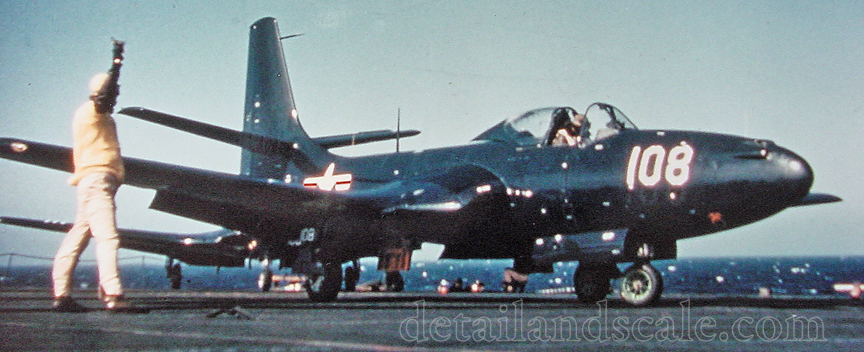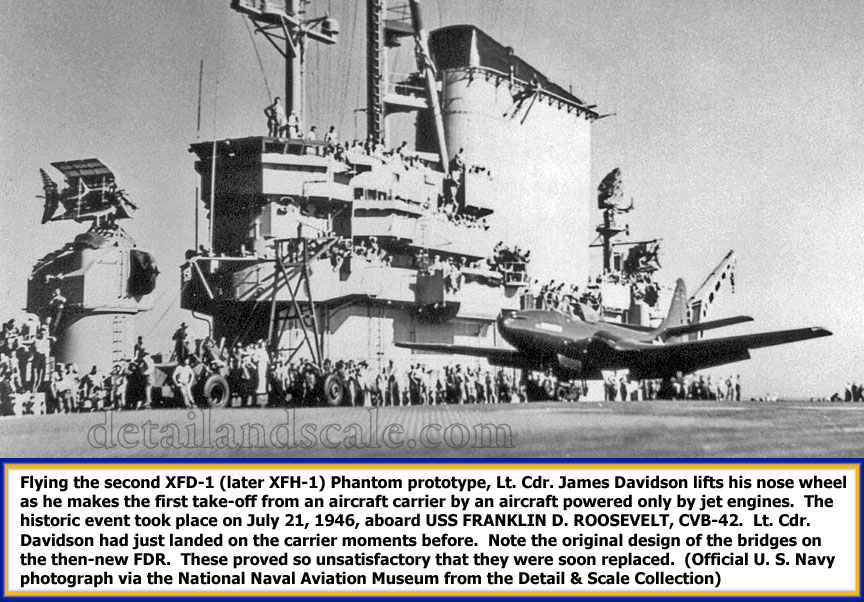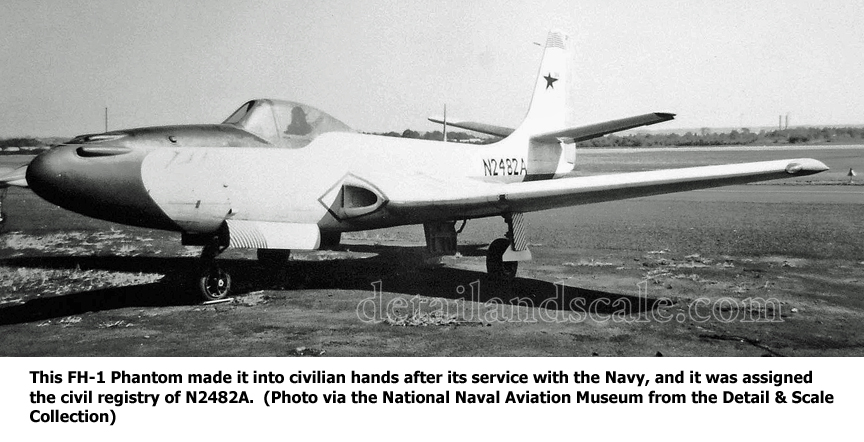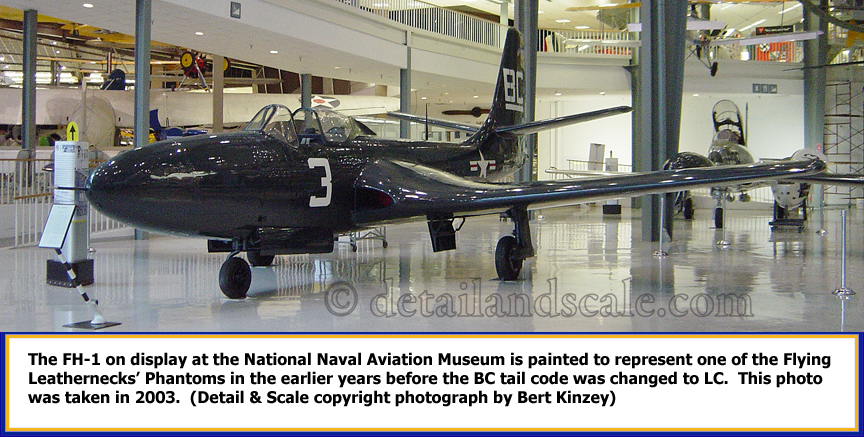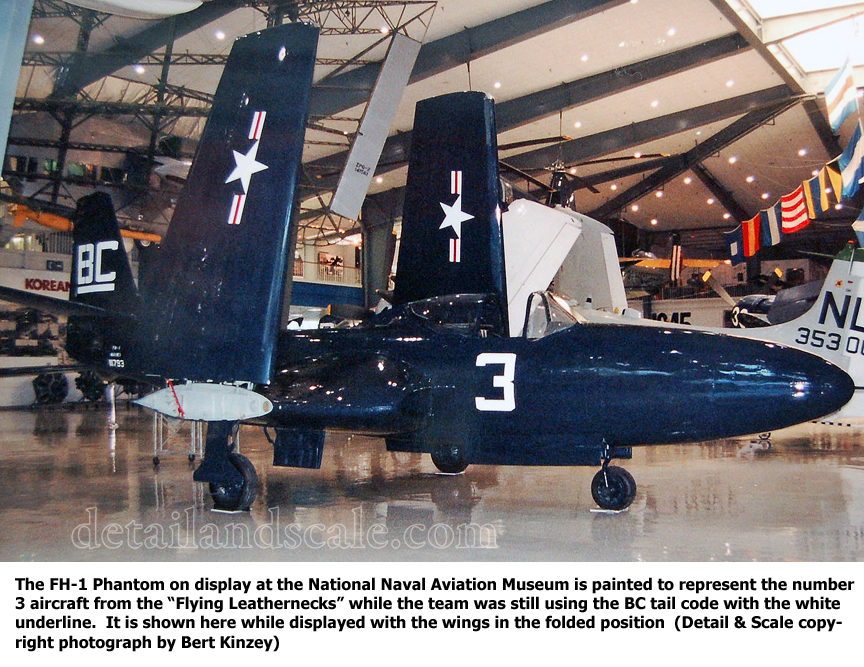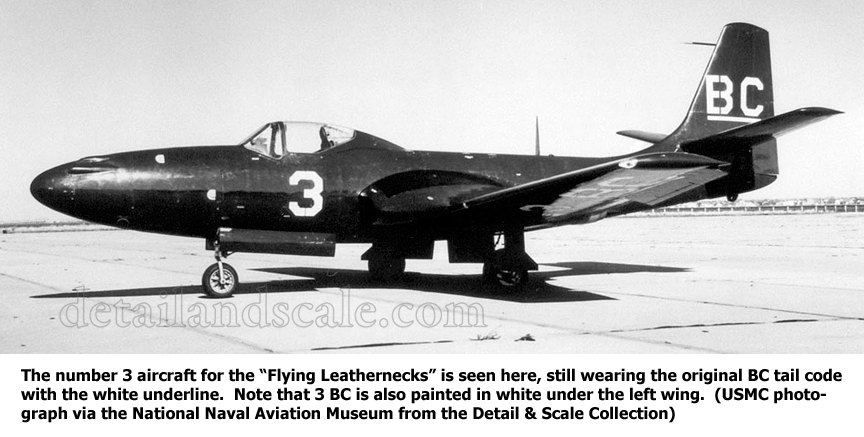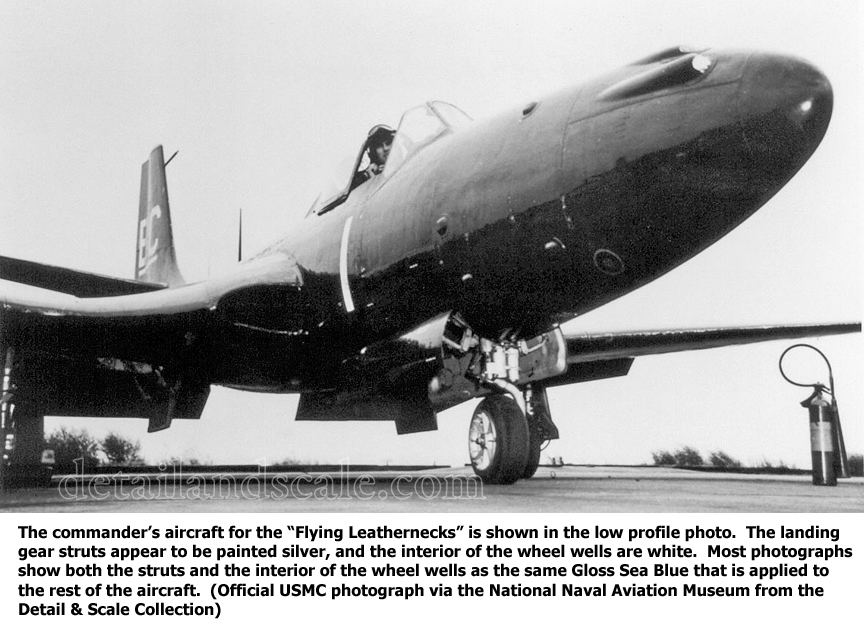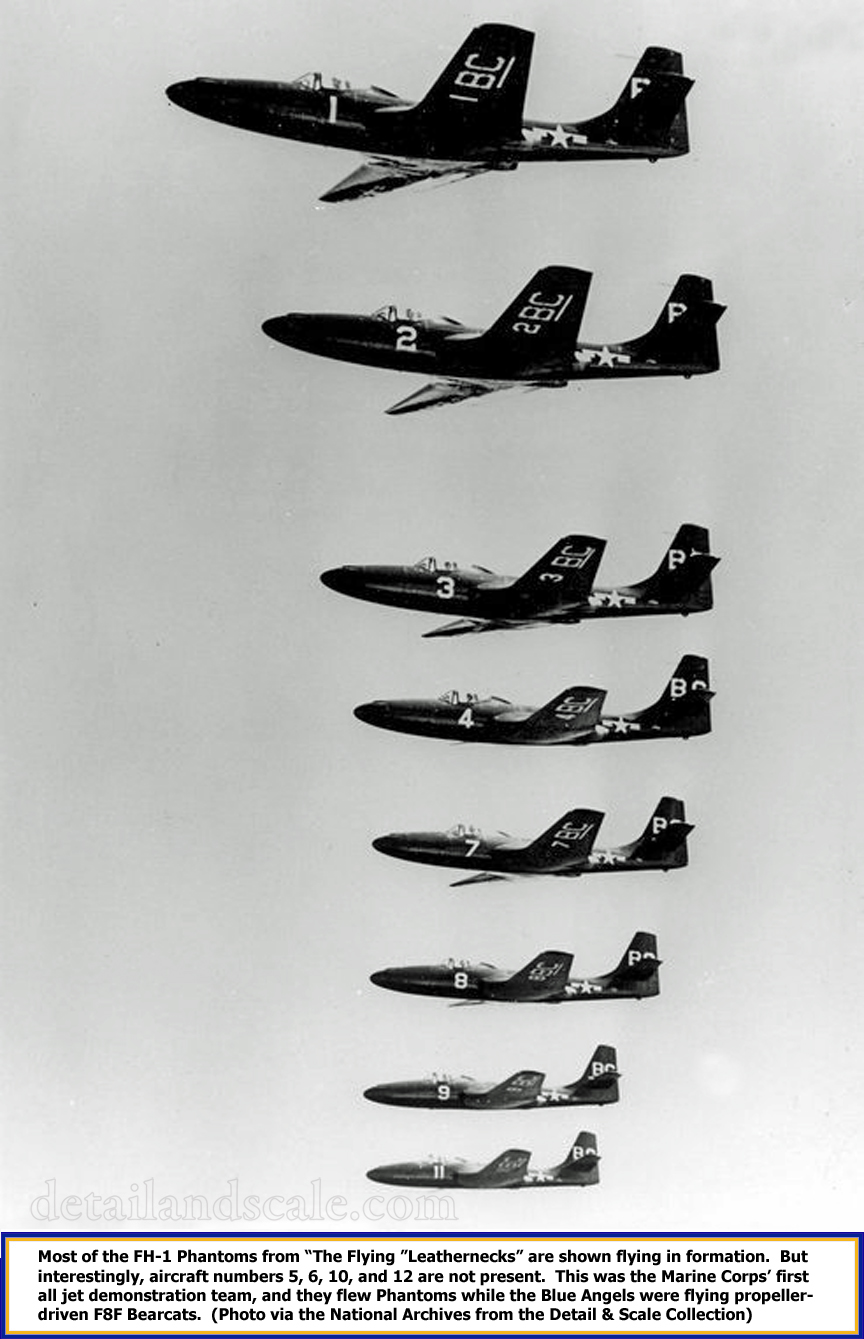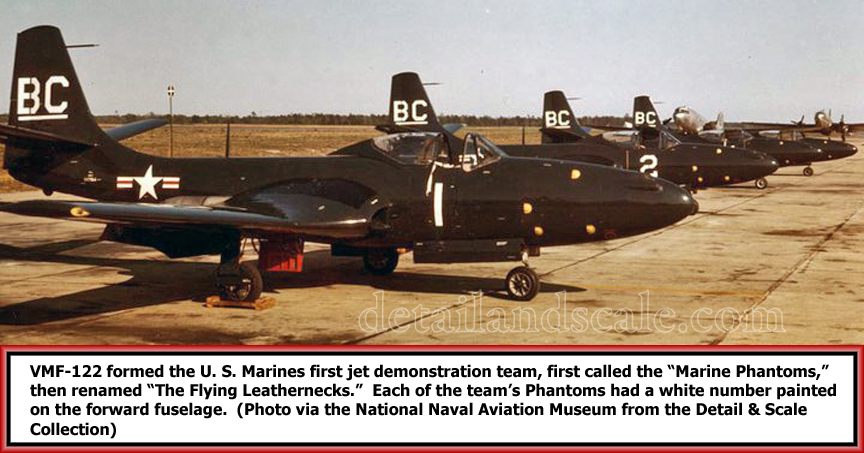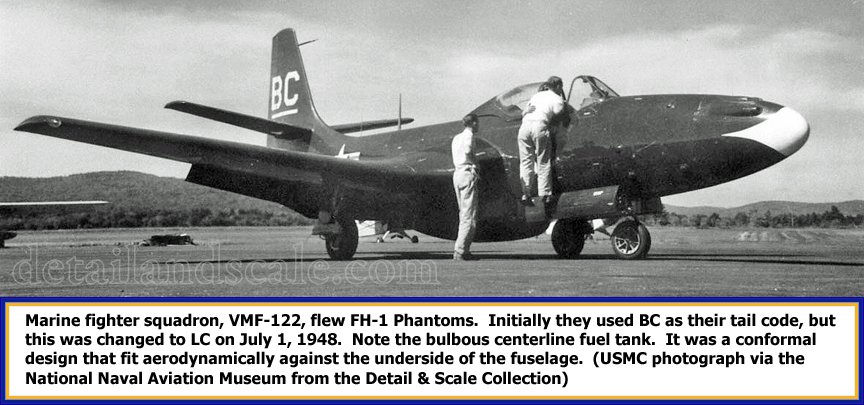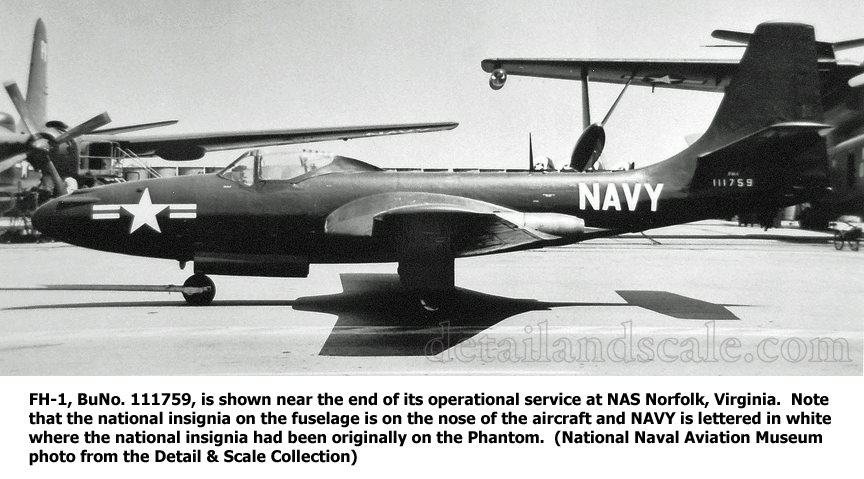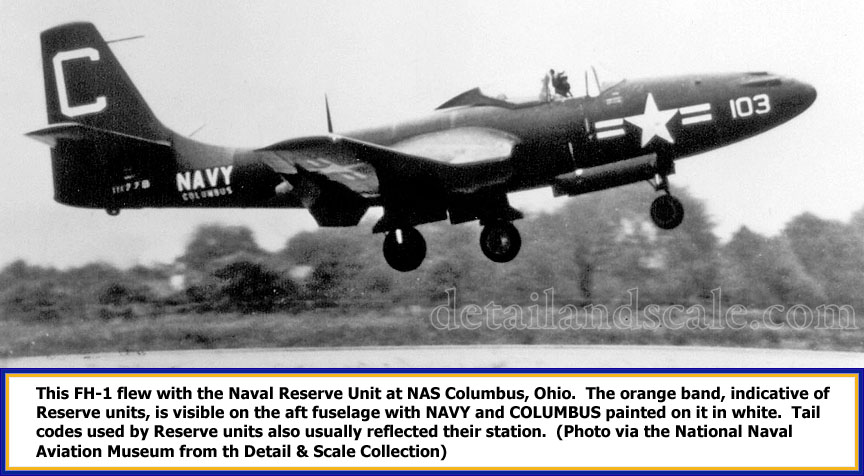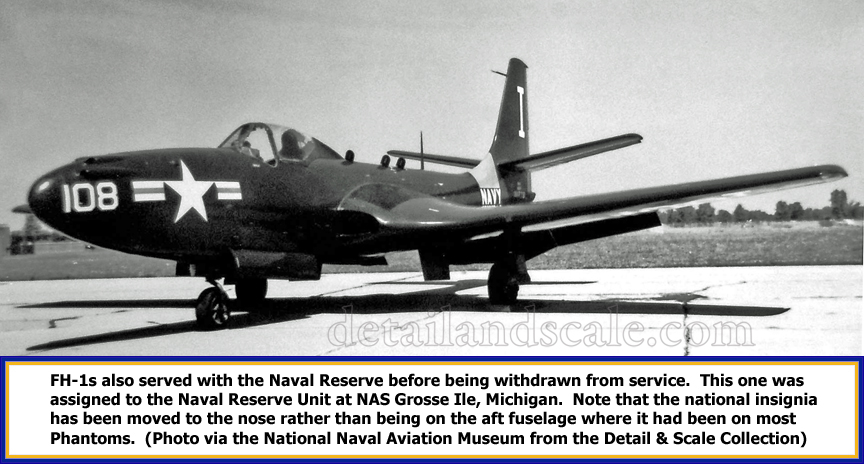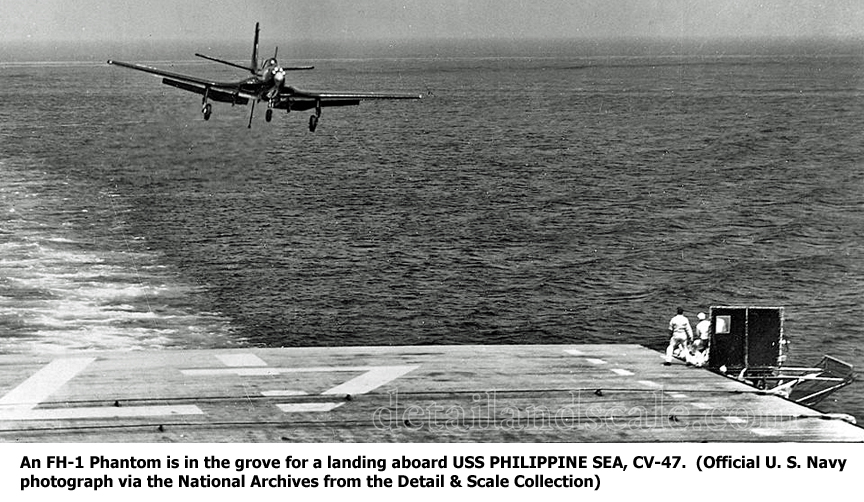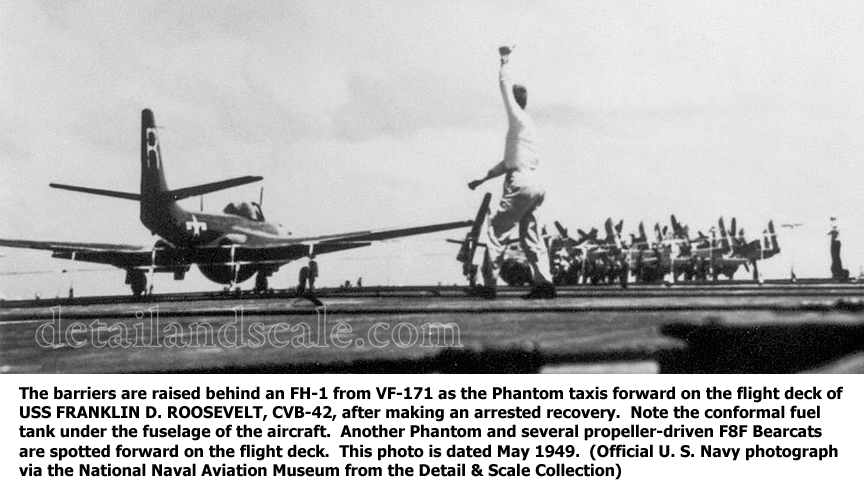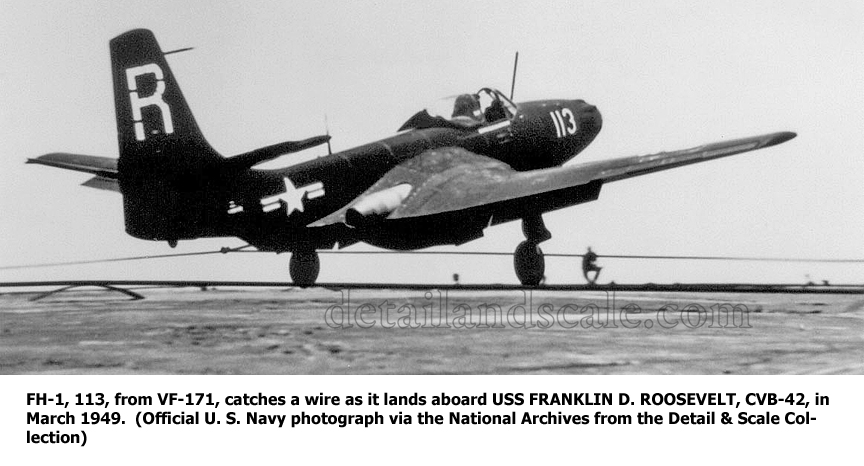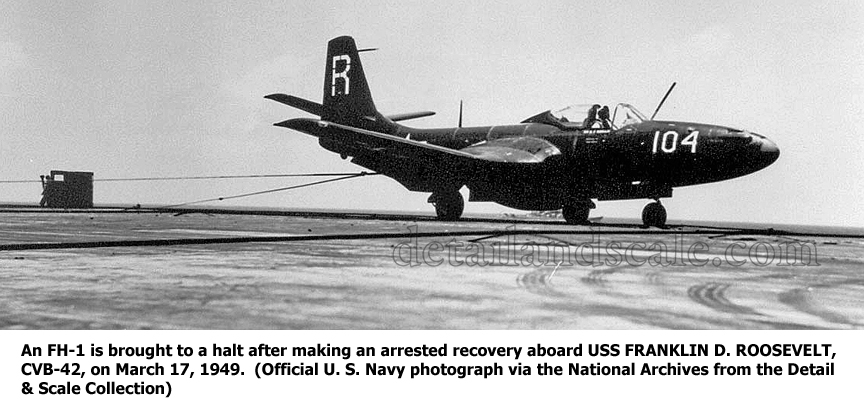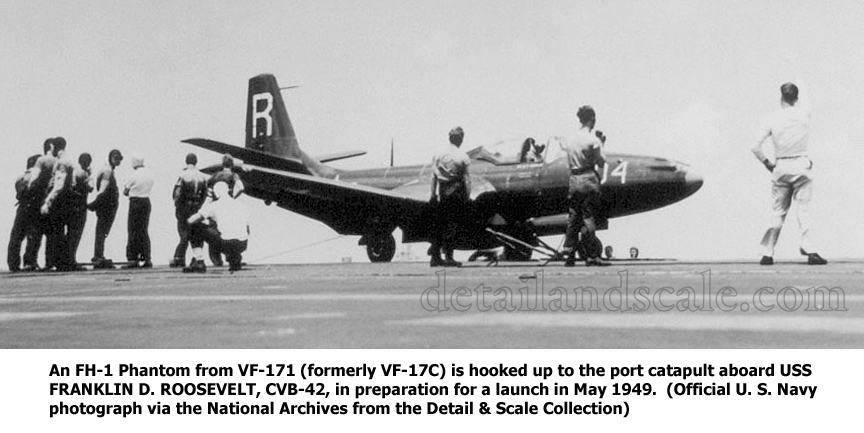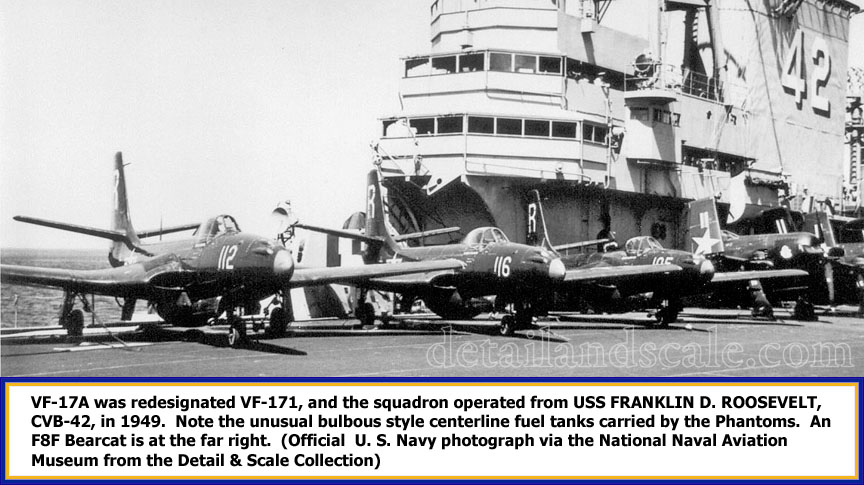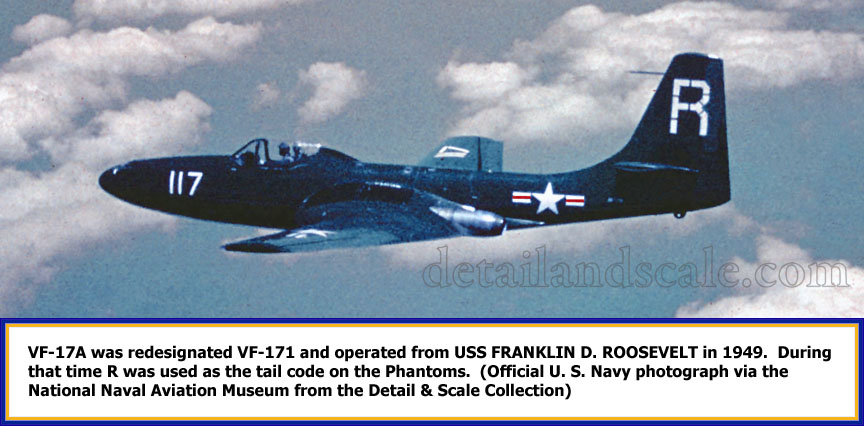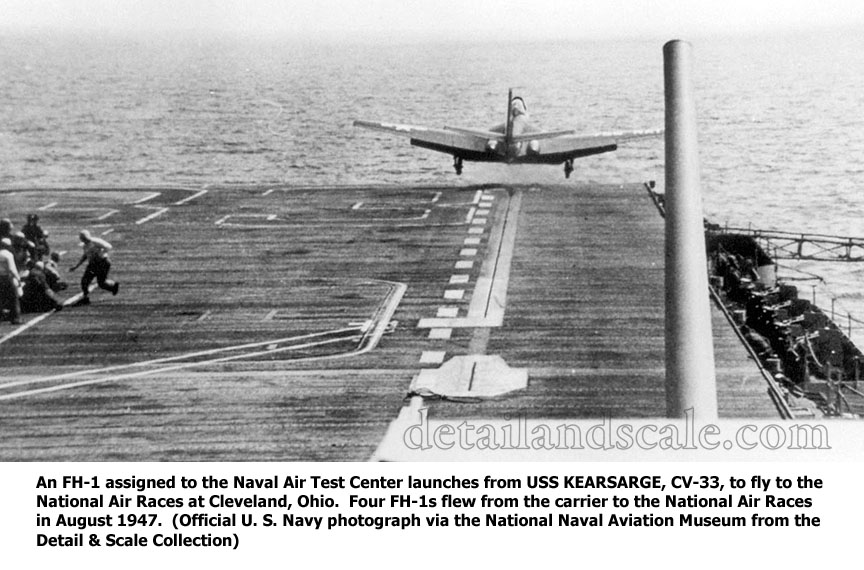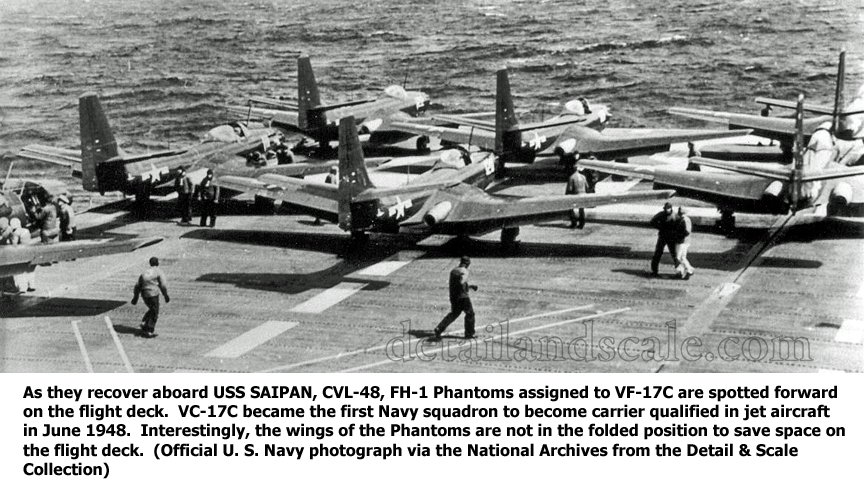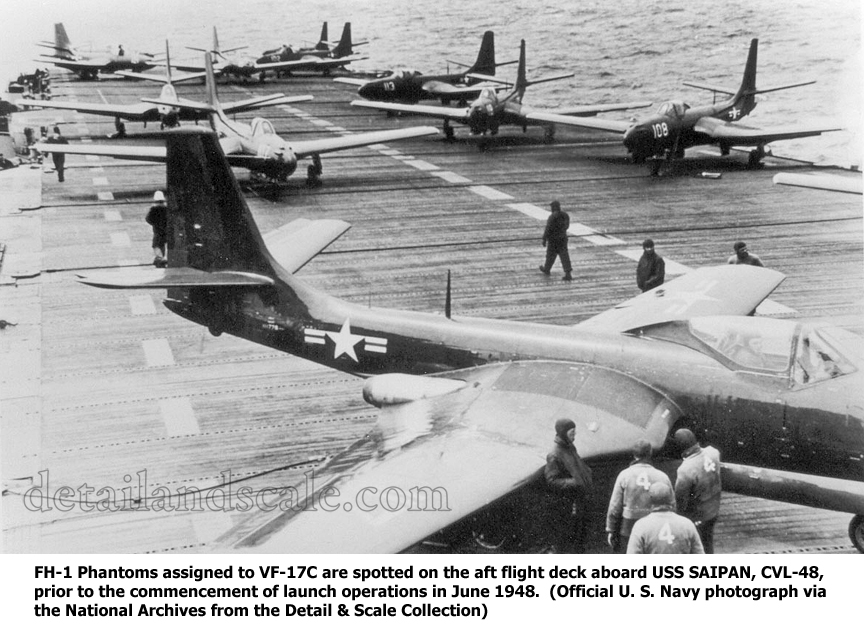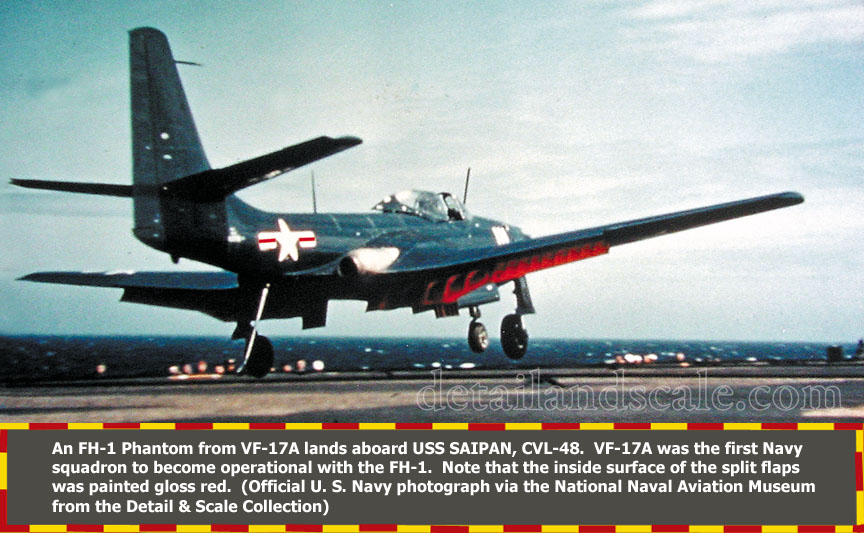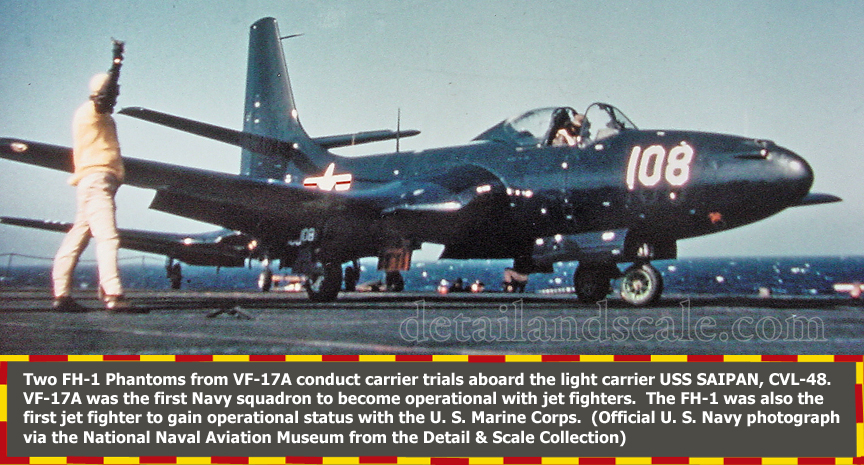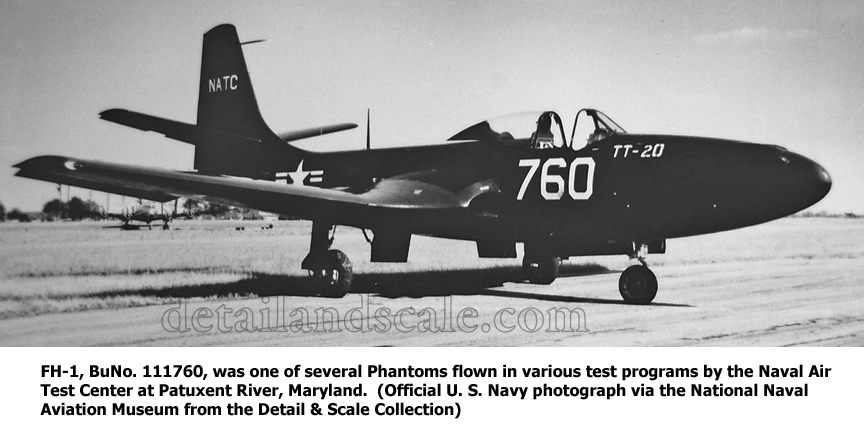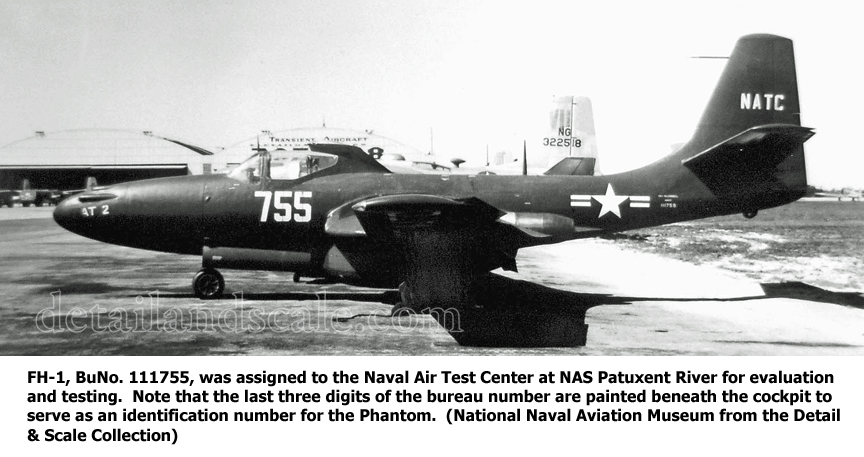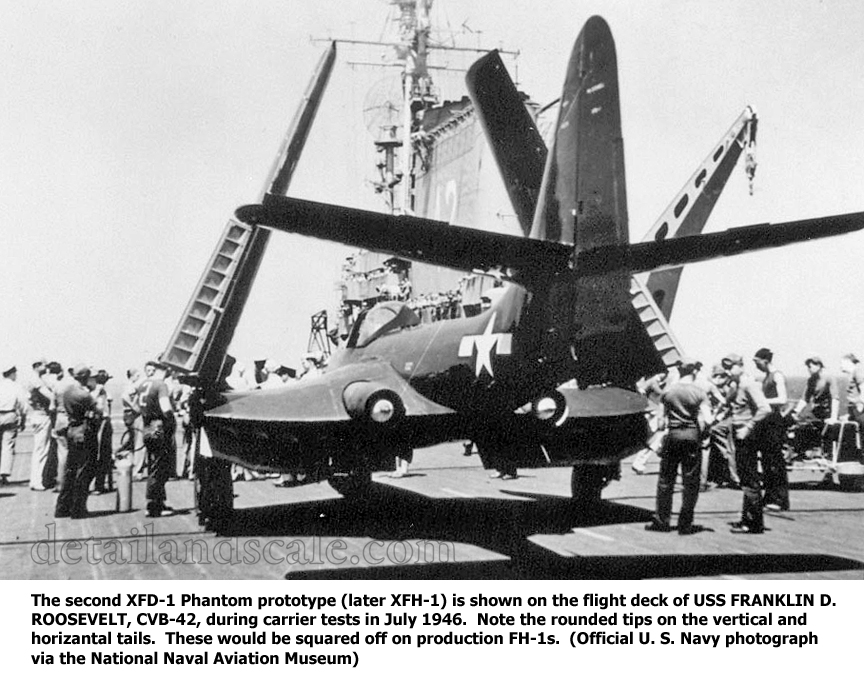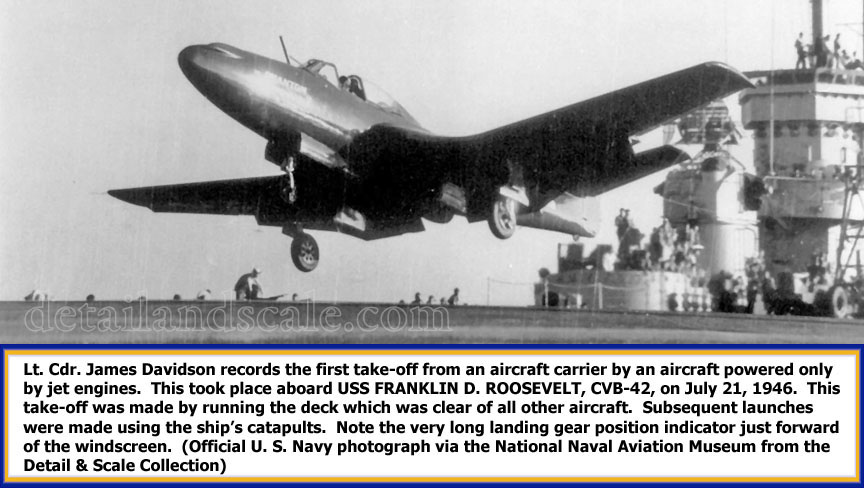While World War II raged around the globe, the major aircraft manufacturers in the United States were working at full capacity to build the warplanes America needed to win the war against the Axis powers. But smaller contractors provided the armed forces with a source for new aircraft development. One of these, the McDonnell Aircraft Corporation in St. Louis, Missouri, was relatively new, having been founded in 1939, and it had primarily been a sub-contractor since it began. It also had no previous experience with Navy aircraft. But unlike the big aircraft contractors, McDonnell had the capability to expand its operations, and on August 30, 1943, the Navy gave the new company a letter of intent which served as a contract for two prototypes for what would become the first jet fighter to operate from aircraft carriers.
The Navy assigned the prototypes the XFD-1 designation. The X stood for experimental, the F was for fighter, and the D was the manufacturer’s designator for McDonnell. M was already being used for the Eastern Aircraft Division of General Motors which was producing the FM-1 and FM-2 Wildcat fighters. D had previously been used for Douglas, but in mid-1943, it did not appear that Douglas would be producing any more fighters for the Navy.
The initial design had six small jet engines buried in its wings, but this was later increased to eight and then to ten. But the final design was powered by two Westinghouse WE-19XB-2B turbojet engines which in production would be designated J30-WE-20. When the first prototype was ready to make its first flight, only one engine was ready, but sure of their design, McDonnell went ahead and made the flight successfully on only one engine. This took place on January 26, 1945, with Woodward Burke at the controls. Unfortunately, Burke was killed on November 1, 1945, while flying the same aircraft. On July 21, 1946, LCDR James Davidson, flying the second XFD-1, made the first landing by an all jet powered aircraft aboard USS FRANKLIN D. ROOSEVELT, CVB-42. He then made the first take off from a carrier by a jet fighter.
On March 7, 1945, the Navy placed an order for 100 production FD-1s. The first flight of an FD-1 took place on November 28, 1946, and deliveries to Navy squadrons began on July 23, 1947. As this happened, Douglas Aircraft again began producing fighters for the Navy, and the D manufacturer’s designation reverted back to that company. McDonnell was then assigned the H designation, and the new aircraft became the FH-1 instead of FD-1. The XFD-1s were likewise redesignated XFH-1s.
The FH-1s differed from the prototypes in that rounded tips of the tail surfaces were replaced with squared tips, and the size of the vertical tail was increased. The design of the canopy was slightly changed as well, and the overall length increased from 37 feet, 3 inches, to 38 feet, 9 inches.
When World War II ended, the Navy cut the order from one hundred to sixty aircraft. But these sixty Phantoms were the first jet fighters to enter squadron service with both the Navy and Marine Corps.
The first Navy squadron to become operational with the FH-1 was VF-17A which conducted carrier qualifications aboard the light carrier USS SAIPAN, CVL-48. The Marine Corps’ flight demonstration team, called the “Marine Phantoms,” was the first such team to equip with jet aircraft when it acquired FH-1 Phantoms. This team was subsequently renamed the “Flying Leathernecks.”
Deliveries were completed by May 27, 1948. After serving with several Navy and Marine squadrons, the last of the FH-1s were taken out of front line service by July 1, 1950. The last unit to operate the Phantom was VMF-122.
FH-1 Phantom General Photos:
This set consists of general photographs showing the XFD-1/XFH-1 and FH-1 Phantoms in service with the U. S. Navy and U. S. Marine Corps. Included are two photos of the FH-1 on display at the National Naval Aviation Museum in Pensacola, Florida. One photo of an FH-1 with a civil registry is also in this set.
Most of the photographs in this set were obtained from the National Naval Aviation Museum and the National Archives.
FH-1 Phantom Detail Photo Set:
This photo set contains detail photographs of the McDonnell FH-1 Phantom. All but two of the photos were taken by Bert Kinzey and Rock Roszak of the FH-1 on display at the National Naval Aviation Museum on three different visits. Two are file photographs to show the noticeable ports for the four .50 caliber machine guns that were present on operational FH-1s, but which are missing on the museum’s restored display aircraft.
While the FH-1 on display at the National Naval Aviation museum is beautifully restored, there are several notable differences between it and operational FH-1s that should be pointed out. We have made note of these in the caption boxes, and they are summarized here. In addition to the missing gun ports mentioned above, the pitot probe is attached to the nose of the aircraft. On operational FH-1 Phantoms, the pitot probe was mounted on the leading edge of the vertical tail, just below the fin cap. Operational FH-1s had a tail bumper below the aft end of the fuselage. This feature is missing from the display aircraft, but it can be seen in the photographs in the companion FH-1 General Photo Set. As is usually the case for museum aircraft, there is no hydraulic pressure in the landing gear struts, causing the oleos to compress. On operational FH-1s, they would be extended with the bright silver portion showing. Navy specifications called for the inside of the landing gear wells to be painted Interior Green, and the inside surfaces of the gear doors to be painted red. On the museum’s FH-1, these are painted Gloss Sea Blue like the rest of the aircraft. Photos of operational aircraft show that the landing gear struts and wheels were usually painted silver, however, the museum’s aircraft has the struts and wheels painted Gloss Insignia Blue.
While the exterior of the FH-1 on display at the National Naval Aviation Museum is well restored and is in excellent condition, the cockpit is not restored. However, we have included a photograph of it for reference purposes.

